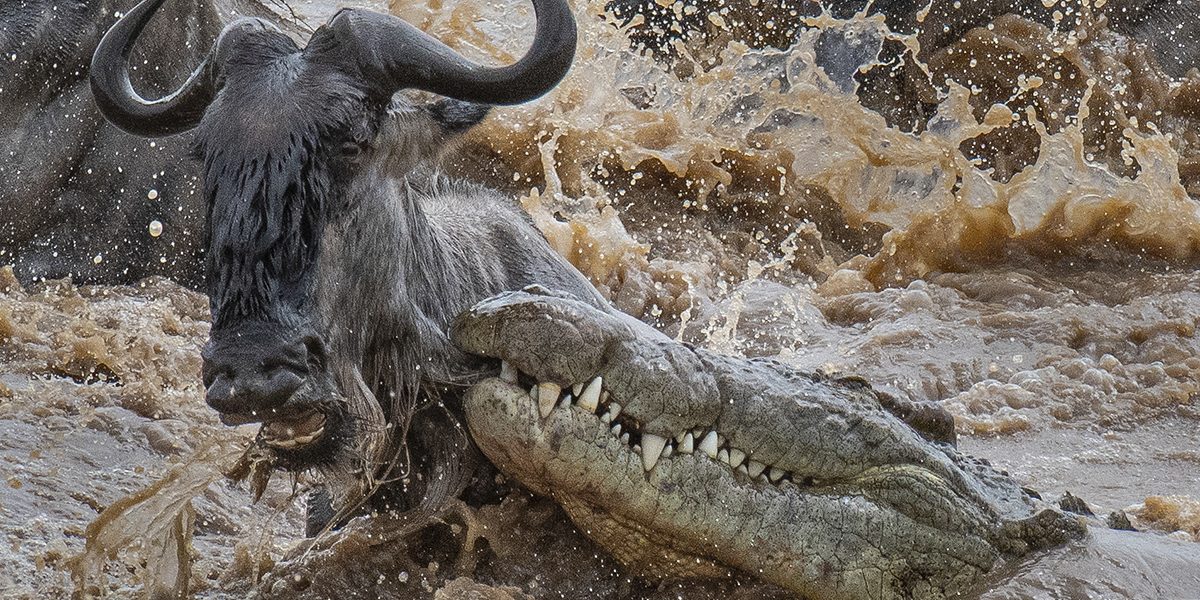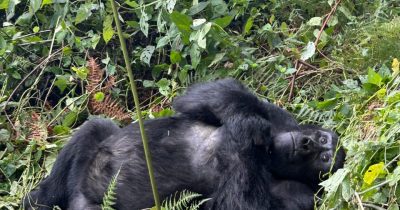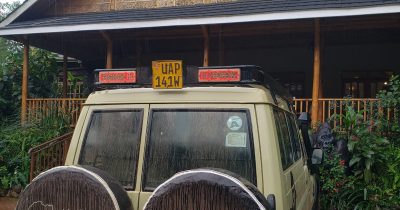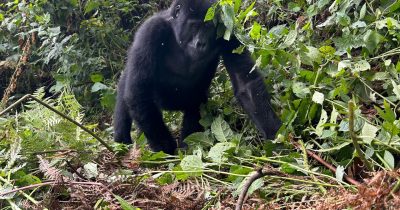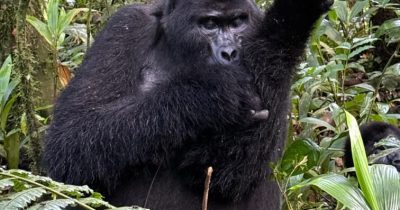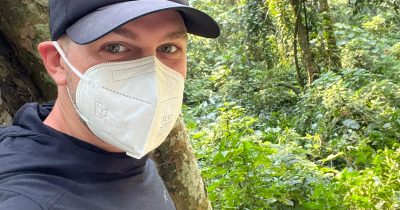What is the Best Place to See Wildebeest Migration?
What is the best place to see wildebeest migration? Wildebeest migration is notably one of the most powerful wildlife experiences. The Mara River is considered to be the best place to see wildebeest migration in Africa. The Mara River is the perfect location for visitors on Kenya safaris to witness the dramatic wildebeest migration experience.
At the Mara River, a huge concentration of wildebeest can be observed as they cross the Tanzanian side to Masai Mara National Reserve in Kenya. A total of more than 2 million wildebeests together with gazelles and zebras cross the plains of Masai Mara National Reserve. The river crossing involves a large population of wildebeest and other mammals crossing through the river amidst several crocodiles and other predators.
What is interesting is that before crossing the river, millions of wildebeests plus other grazers can be observed standing at the lip of the river bank. Then suddenly they cascade downwards to the river, where hundreds of hungry crocodiles await to hunt some down. At this point, it is all about luck as some end up in the sharp teeth of the hungry crocodiles. On crossing the river, they again encounter several predators, especially leopards, lions, African wild dogs, cheetahs, and hyenas.
What is the best time to witness the Mara River crossing?
The best time to experience the most of the Mara River wildebeest crossing is from August to September. It is during this period when the wildebeest embark on a journey to search for pasture and water.
Other places to see wildebeest migration
Masai Mara National Reserve Plains
The great plains of the Mara Reserve offer a remarkable view of the wildebeest migration. There is availability of pasture and freshwater in the Masai Mara Reserve which attracts most of the wildebeest. This is especially from September and October.
Masai Mara National Reserve is a scenic conservancy area located in Southwestern Kenya, Narok Country. The Mara Reserve was founded in 1961 as a Wildlife Sanctuary and 1974, it was designated as a National Reserve. Today, the Masai Mara Reserve occupies a land area of up to 1510 sq. km.
Masai Mara is popular not only for wildebeest migration but also offers the best big 5 game safaris and is the premier Kenya safari destination. This reserve is a wildlife paradise and besides wildebeest, there are lots of African cape buffaloes, elephants, cheetahs, rhinos, giraffes, zebras, leopards, and hippos.
Other animals include black-backed jackals, bat-eared foxes, spotted hyenas, and more. It also protects a total of about 500 species of birds including the secretary bird, usambiro barbet, rufous bellied heron, Jackson’s window bird, rosy throated longclaw, saddle billed stork, red-throated tit, purple grenadier, Denham’s bustard and more.
The Ndutu Plains
From the Masai Mara plains, usually wildebeests move back to the southern side towards Tanzania. The Ndutu is found in the Northern part of the Ngorongoro Conservation Area just along the outskirts of the Southern Serengeti Plains.
A huge concentration of wildebeest gather at this point from January to February. This is the period when the majority of the wildebeest also give birth. During the birthing season, not large herds of wildebeest and zebras can be observed across the plains of Ndutu.
Diversity of other wildlife can also be spotted around the Ndutu area including cheetahs, hyenas, dik-dik, giraffes, leopards, lions, bat-eared foxes, wild cats, jackals, and more. The Ndutu is a perfect place to see wildebeests in the Ngorongoro Conservation Area. It has marshes, vast plains, lakes, and woodland which also harbor lots of bird species.
Central Serengeti National Park and Western Corridor
Central Serengeti is known for its spectacularly stunning ecosystem and is notably the best area to explore on Tanzania safaris. The Central Serengeti (Seronera Valley) is popular for rewarding game-viewing experiences. It is one area to find the blue wildebeest and zebras. The western corridor is an extensive piece of land that follows the Grumeti River course from Central Serengeti about 100 km towards Lake Victoria. The Western Corridor features mainly scenic Mbalageti and Grumeti Rivers.
At the Grumeti River in the western corridor, another great wildebeest migration experience happens as these animals cross the river. Upon a successful crossing, they gather on the Southern bank of the Grumeti River where you can spend at least 2 weeks. This usually happens around May, June, and July.
Northern Serengeti and the Mara River
From the western corridor and after crossing the Grumeti River, wildebeests can be seen around Kogatende and Lamai areas. These are found along the Mara River banks. These areas are the best spots for holidaymakers to see wildebeest migration. This is especially around July, August, September to October and take note, July and August are the year’s peak months. Some of the other animals common around these places are major hunters like lions, leopards, and cheetahs.
Where do the wildebeest migrate from & to?
The great migration doesn’t have an actual beginning or end. It takes a repetitive circular kind of journey. It is believed it begins with birthing season in the Ndutu plains then movement begins towards the North via the Serengeti before getting to the scenic Mara River for river crossing to Masai Mara Reserve. From Masai Mara, they return to the Southern plains.
Why do wildebeest migrate?
The reasons for the migration of wildebeests can simply be attributed to the need for water and greener pastures. They are guided by instincts and movement is guided by weather and greener fresh grass. The other reason is they look for water to drink. The movement usually comprises large herds of gazelles, zebras as well as impalas.
When is the best time to go on the great migration safari tour?
Different events unfold that define the great migration circle. The birthing/calving season runs from February to March (Around the Southern Serengeti); the breeding season from April to May (in Western and Central Serengeti), and the Mara River crossing from July to August (the Northern Serengeti and Masai Mara). The Grumeti river crossings occur from May to June (the Central Serengeti) and the wildebeest can be on the move from November to January, especially between Masai Mara and Northern Serengeti to Southern Serengeti.
Accommodation on a wildebeest migration safari
Accommodation in the Northern Masai Mara National Reserve: Mara River Lodge, Naboisho Camp, Royal Mara Safari Lodge, Ngerende Island Lodge. In the Eastern end of Masai Mara, the accommodation options include the Mara Bushtop, Fig Tree Camp, Entumoto Safari Camp, Leleshwa Camp, Siana Springs Camp, Mara Leisure Camp, and others. Around the Central area of Masai Mara, the lodges/camps include Mara Ngenche Safari Camp, Governor’s Moran Camp, and Rekero Camp. Around Ndutu, the ideal places to consider for overnight stay include Kenzan Ndutu Camps, ndutu Safari Lodge, Kati Kati Ndutu Tented Camp Lake Masek Tented Camp, etc.
How to access Masai Mara Reserve?
The main entrance gates offer visitor access to Masai Mara National Reserve including Oloolaimutia Gate, Musiara Gate, Oloololo Gate, Talek Gate, and Sekenani Gate. Visitors who take flights can land at the following airstrips; Sian Springs, Shikar Airstrip, Musiara Airstrip, Olare Orok, Maasai Mara Serena Airstrip, Keekorok, and Kichwa Tembo Airstrip, etc.
Conclusively, the best place to see wildebeest migration is the Mara River crossing. But there are several options including the Ndutu area in Tanzania, Grumeti River crossing in Serengeti and Masai Mara plains. Talk to our expert to plan and book an unforgettable migration safari to Kenya and Tanzania.
